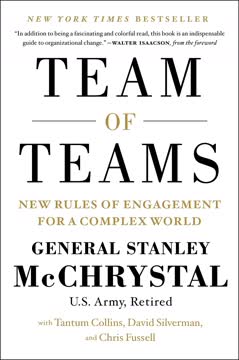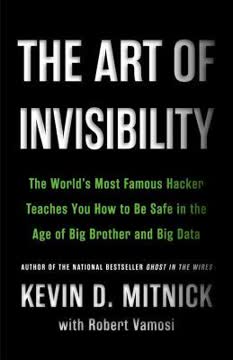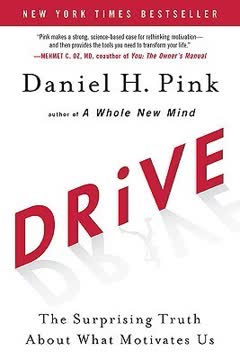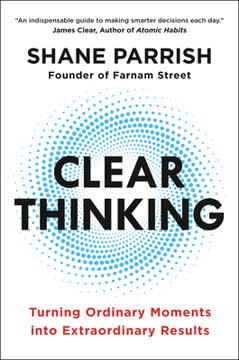نکات کلیدی
1. تکامل سازمانی: پارادایمی نوین برای آگاهی سازمانی
اینشتین بهخوبی گفت که مشکلات نمیتوانند با همان سطح آگاهی که آنها را ایجاد کردهاند، حل شوند.
مراحل تکامل سازمانی. سازمانها، مانند آگاهی انسانی، از مراحل متمایز عبور کردهاند: قرمز-انفعالی (استفاده مداوم از قدرت)، کهربایی-تطبیقی (نقشها و سلسلهمراتب بسیار رسمی)، نارنجی-دستاوردی (نوآوری و پاسخگویی) و سبز-چندصدایی (توانمندسازی و فرهنگ مبتنی بر ارزشها). تکامل-آبی نمایانگر مرحله بعدی است که با خودمدیریتی، تمامیت و هدف تکاملی مشخص میشود.
ویژگیهای آبی. سازمانهای آبی بر اساس اعتماد و نه ترس عمل میکنند و افراد را بهعنوان موجوداتی باارزش و توانمند میبینند. آنها پیچیدگی و عدم قطعیت را میپذیرند و بر حس کردن و پاسخ دادن تمرکز میکنند، نه پیشبینی و کنترل. این تغییر پارادایم به سازمانهایی اصیل، هدفمند و سازگار اجازه میدهد که بهتر به چالشهای زمانه پاسخ دهند.
2. خودمدیریتی: فراتر رفتن از سلسلهمراتب برای توزیع قدرت
با عدم وجود ترفیعهای نادر برای رقابت، عدم وجود رؤسا برای راضی کردن و عدم وجود رقبای سرسخت، بسیاری از سموم سیاسی از سازمانها خارج میشود.
قدرت توزیعشده. خودمدیریتی سلسلهمراتب سنتی را با ساختارهای سیال و مبتنی بر همتایان جایگزین میکند. تصمیمگیری از طریق شیوههایی مانند "فرآیند مشاوره" غیرمتمرکز میشود، جایی که هر کسی میتواند پس از مشاوره با طرفهای ذینفع و کارشناسان، تصمیم بگیرد.
سازگاری ارگانیک. بدون توصیفهای شغلی یا عناوین ثابت، نقشها بهطور طبیعی بر اساس مهارتها و نیازهای سازمانی تکامل مییابند. این انعطافپذیری اجازه میدهد تا به سرعت به شرایط متغیر سازگار شویم و نوآوری را پرورش دهیم.
- تیمها معمولاً کوچک (۱۰-۲۰ نفر) و عمدتاً خودگردان هستند.
- وظایف اداری به حداقل میرسد و بیشتر مسئولیتها درون تیمها مدیریت میشود.
- هماهنگی از طریق جلسات موردی و گروههای کاری داوطلبانه انجام میشود.
3. تمامیت: پذیرش خود واقعیمان در محل کار
زندگی میخواهد اتفاق بیفتد. زندگی غیرقابل توقف است. هر زمان که سعی کنیم زندگی را محدود کنیم یا با نیاز بنیادی آن به ابراز مخالفت کنیم، به مشکل میخوریم.
فراتر از ماسک حرفهای. سازمانهای آبی تلاش میکنند تا محیطهایی ایجاد کنند که افراد بتوانند خود واقعیشان را به محل کار بیاورند – عقلانی، احساسی، شهودی و معنوی. این امر ارتباطات عمیقتر، خلاقیت و مشارکت را تقویت میکند.
شیوههای تمامیت:
- فضاهای بازتابی: اتاقهای مدیتیشن، نظارت تیمی، مربیگری همتایان
- داستانگویی: به اشتراکگذاری شخصی در جلسات، رویدادهای سراسری شرکت
- حل تعارض: فرآیندهای مشخص برای رسیدگی به اختلافات
- طراحی دفتر: فضاهایی که بیشتر شبیه خانه هستند تا محل کار سنتی
4. هدف تکاملی: سازمانها بهعنوان موجودات زنده با جهتگیری خاص خود
تلاش برای پیشبینی و کنترل آینده بیفایده است. ما تنها زمانی پیشبینی میکنیم که یک تصمیم خاص نیاز به این کار داشته باشد.
هدف بهجای سود. سازمانهای آبی خود را بهعنوان موجوداتی با هدف تکاملی خاص میبینند که از حداکثر کردن ارزش سهامداران متمایز است. رهبران و کارکنان نقش خود را بهعنوان سرپرستانی میبینند که به جهتگیری نوظهور سازمان گوش میدهند و پاسخ میدهند.
استراتژی ارگانیک. بهجای برنامهریزی استراتژیک از بالا به پایین، استراتژی بهطور ارگانیک از هوش جمعی کارکنان خودمدیر ظهور میکند. این امر اجازه میدهد تا:
- سازگاری سریع با تغییرات بازار
- نوآوری که بهجای سود صرفاً بر اساس هدف هدایت میشود
- افزایش مشارکت کارکنان از طریق ارتباط با یک هدف معنادار
5. شیوههای آبی: راههای مشخص برای پیادهسازی ساختارهای سازمانی جدید
خودمدیریتی، درست مانند مدل هرم سنتی که جایگزین آن میشود، با مجموعهای از ساختارها، فرآیندها و شیوههای درهمتنیده کار میکند.
نوآوری در فرآیندهای اصلی. سازمانهای آبی شیوههای تجاری بنیادی را بازنگری میکنند تا با خودمدیریتی، تمامیت و هدف تکاملی همراستا شوند:
- استخدام: تمرکز بر تناسب فرهنگی و همراستایی با هدف
- ورود به سازمان: آموزش گسترده در زمینه خودمدیریتی و ارزشهای سازمانی
- مدیریت عملکرد: بازخورد مبتنی بر همتایان و اهداف خودتنظیمشده
- جبران خدمات: اغلب از طریق فرآیندهای مبتنی بر همتایان تعیین میشود
- بودجهبندی و کنترل: پیشبینی حداقلی، هزینهکرد مبتنی بر اعتماد
- مدیریت تغییر: تکامل مداوم و ارگانیک بهجای ابتکارات از بالا به پایین
6. رهبری در آبی: ایجاد و حفظ فضایی برای روشهای جدید عمل
قاعده کلی بهنظر میرسد که سطح آگاهی یک سازمان نمیتواند از سطح آگاهی رهبر آن فراتر رود.
نگهداشتن فضا. رهبران آبی نقش حیاتی در ایجاد و حفظ محیطی دارند که در آن خودمدیریتی، تمامیت و هدف تکاملی میتواند شکوفا شود. این شامل:
- تقویت مداوم اصول آبی در زمانی که شیوههای سنتی وارد میشوند
- الگو بودن در آسیبپذیری، اصالت و اعتماد به فرآیند
- مقاومت در برابر تمایل به تحمیل کنترل یا اتخاذ تصمیمات از بالا به پایین
اهمیت پارادوکسی. در حالی که رهبران آبی قدرت مستقیم کمتری دارند، حضور و تعهد آنها به اصول آبی برای عملکرد سازمان در این سطح از آگاهی ضروری است.
7. گذار به آبی: شرایط لازم و مراحل عملی برای تحول
چه چیزی باعث میشود که ما هنگام رفتن به محل کار، بخش زیادی از خود را پشت سر بگذاریم؟ یک توطئه از ترسها در کار است که شامل کارکنان بههمان اندازه که سازمانهایشان میشود.
پیشنیازهای کلیدی:
- همراستایی مدیرعامل: رهبر ارشد باید بهطور عمیق اصول آبی را درک و پذیرا باشد.
- حمایت هیئتمدیره: مالکان/اعضای هیئتمدیره باید از رویکرد آبی حمایت کنند.
فرآیند تحول:
- با یک پیشرفت (خودمدیریتی، تمامیت یا هدف تکاملی) شروع کنید و به تدریج دیگران را معرفی کنید.
- انتظار مقاومت داشته باشید، بهویژه از سوی مدیریت میانی و وظایف اداری.
- مالکیت روانی را در میان کارکنان از طریق هدف، تقلید همتایان و فشار بازار تقویت کنید.
- شیوههای جدید را بهتدریج پیادهسازی کنید و زمان کافی برای سازگاری و یادگیری فراهم کنید.
تکامل مداوم. گذار به آبی یک رویداد یکباره نیست، بلکه یک فرآیند مداوم از حس کردن و پاسخ دادن به نیازها و هدفهای سازمان است.
آخرین بهروزرسانی::
FAQ
What's Reinventing Organizations about?
- Organizational Evolution: The book explores the evolution of human consciousness and its impact on organizational models, highlighting the shift from traditional hierarchies to "Teal" organizations.
- Teal Organizations: These are defined by principles of self-management, wholeness, and evolutionary purpose, aiming to create environments where individuals can thrive.
- Practical Examples: Frederic Laloux provides case studies of organizations that have successfully implemented Teal principles, illustrating their effectiveness and differences from conventional management practices.
Why should I read Reinventing Organizations?
- Innovative Perspective: The book challenges traditional organizational structures, offering a fresh perspective on management that can lead to increased engagement and efficiency.
- Real-World Examples: It includes numerous case studies, making the concepts relatable and applicable across various sectors.
- Guidance for Change: For leaders and change agents, it serves as a practical guide to transitioning from traditional models to more evolved organizational structures.
What are the key takeaways of Reinventing Organizations?
- Three Breakthroughs: The book identifies self-management, wholeness, and evolutionary purpose as key breakthroughs for Teal organizations.
- Self-Management: Empowering teams to make decisions collectively without hierarchical oversight leads to increased engagement and accountability.
- Wholeness and Purpose: Encouraging employees to bring their whole selves to work fosters authenticity, while focusing on purpose transcends profit motives.
How does Frederic Laloux define "Teal Organizations"?
- Evolutionary Stage: Teal Organizations represent a new stage in human consciousness, characterized by self-management, wholeness, and evolutionary purpose.
- Living Systems Metaphor: Laloux uses this metaphor to emphasize adaptability and organic growth, encouraging a holistic management approach.
- Collective Intelligence: These organizations leverage the collective intelligence of their members for effective problem-solving and innovation.
What is the concept of self-management in Reinventing Organizations?
- Decentralized Decision-Making: Teams make decisions without needing approval from higher-ups, fostering a sense of ownership and empowerment.
- Advice Process: Decisions are made by seeking input from affected parties, ensuring diverse perspectives are considered while maintaining accountability.
- Fluid Roles: Individuals can take on various responsibilities based on skills and interests, enhancing collaboration and innovation.
What is the role of evolutionary purpose in Reinventing Organizations?
- Guiding Direction: Evolutionary purpose serves as the underlying reason for an organization's existence, guiding actions beyond profit motives.
- Collective Intelligence: Organizations should listen to their purpose collectively, allowing all employees to contribute to its evolution.
- Alignment with Values: When purpose aligns with employee values, it fosters a sense of belonging and commitment, enhancing performance.
How do Teal Organizations handle decision-making?
- Advice Process: Decisions are made by consulting relevant stakeholders, ensuring diverse perspectives are considered.
- No Consensus Required: Unlike traditional models, decisions can be made without unanimous agreement, preventing paralysis and encouraging timely action.
- Empowerment and Responsibility: Individuals are empowered to make decisions, fostering ownership and accountability, leading to higher engagement.
What are some examples of Teal Organizations mentioned in Reinventing Organizations?
- Buurtzorg: A Dutch nursing organization with self-managing teams, focusing on holistic care and achieving high patient satisfaction.
- FAVI: A French brass foundry that empowers teams to make production decisions, resulting in high employee engagement and success.
- AES: A global energy provider that initially operated with self-managing teams, emphasizing trust and decentralized decision-making.
What challenges do organizations face when transitioning to a Teal model?
- Cultural Resistance: Resistance from employees accustomed to traditional structures requires strong leadership and a clear vision for change.
- Skill Development: Training in self-management and decision-making processes is crucial for a successful transition.
- Maintaining Trust: Building and maintaining trust is essential, requiring a culture that supports open communication and collaboration.
How does Reinventing Organizations define wholeness?
- Bringing Your Whole Self: Individuals should express all aspects of themselves at work, fostering authenticity and connection.
- Creating Safe Spaces: Environments where employees feel safe to be authentic lead to deeper connections and collaboration.
- Collective Growth: Encouraging wholeness allows the organization to thrive, as people are more engaged and motivated.
What are the implications of the advice process in Reinventing Organizations?
- Empowerment of Employees: The process empowers employees to take initiative and make decisions, fostering trust and collaboration.
- Diverse Perspectives: Seeking input from colleagues leads to better decision-making through a wider range of insights.
- Responsibility and Accountability: Individuals take responsibility for their choices, reinforcing accountability within the organization.
What are the necessary conditions for creating a Teal Organization?
- Leadership Alignment: Leaders must embrace self-management and purpose-driven practices consistent with the Teal paradigm.
- Supportive Ownership: Board members and owners must align with the Evolutionary-Teal perspective to sustain practices.
- Cultural Readiness: A culture open to change and new ways of working is essential for a smooth transition to Teal practices.
نقد و بررسی
کتاب سازمانهای نوین عمدتاً با نقدهای مثبت مواجه شده است و خوانندگان به رویکرد نوآورانه آن در مدیریت سازمانی ارج مینهند. بسیاری از افراد ایدههای کتاب در زمینهی خودمدیریتی، تمامیت و هدف تکاملی را الهامبخش و قابلاجرا میدانند. نسخهی مصور این کتاب به خاطر دسترسیپذیری و جذابیت بصریاش مورد توجه قرار گرفته است. برخی از خوانندگان نسبت به عملی بودن پیادهسازی این مفاهیم در تمامی سازمانها ابراز تردید میکنند. منتقدان اشاره میکنند که ممکن است کتاب مسائل پیچیده را بیش از حد سادهسازی کند و از استراتژیهای اجرایی مشخصی برخوردار نباشد. بهطور کلی، این کتاب بهعنوان اثری تحریککننده و بالقوه تحولآفرین برای کسانی که به الگوهای جدید سازمانی باز هستند، تلقی میشود.
Similar Books











